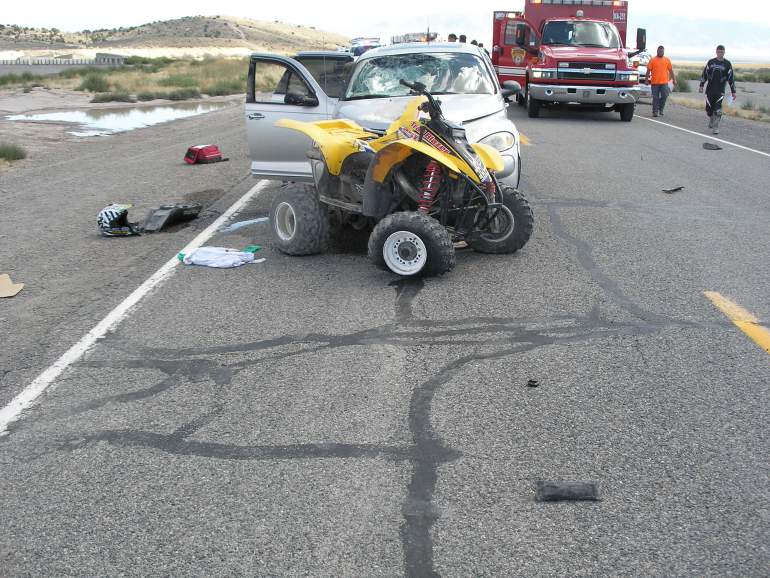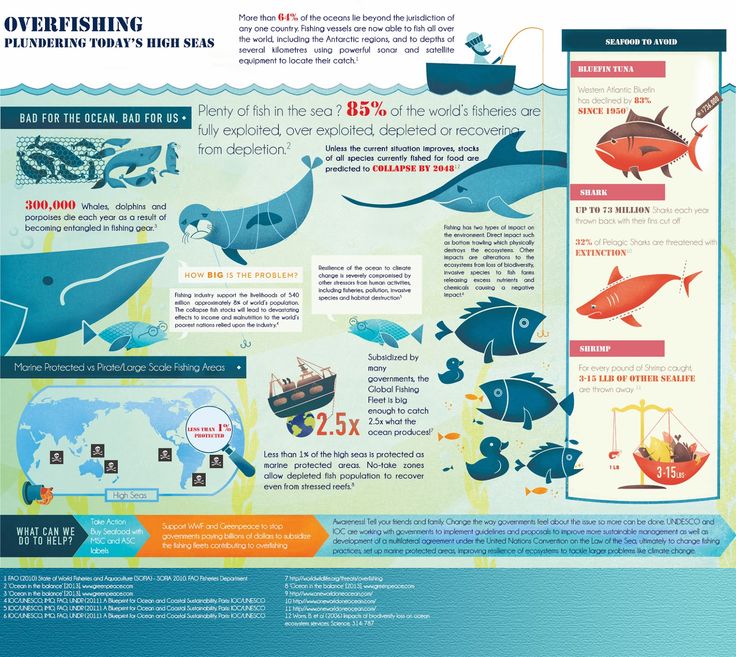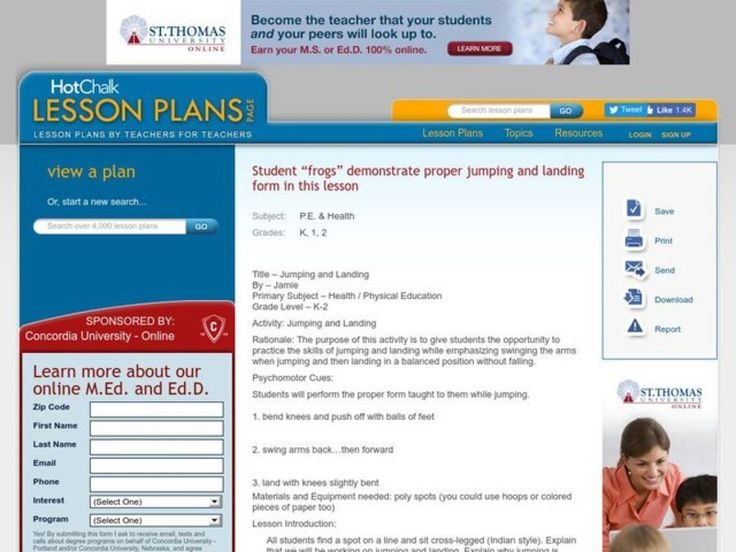Your quad is a do-anything machine. ATV’s are great for getting things done and for recreation too. But now you’re looking at your tires. Maybe you’ve blown one or they’re getting bald. Or maybe you just want a more aggressive tread pattern and a bigger tire. The problem is you’re a little lost when it comes to your ATV tire size.
How big can you go? Should you go big? How do you even know what all these numbers represent?
Don’t worry, we’ve got you covered. We’ll answer all those answers and more in this comprehensive guide.
How Do You Read ATV Tire Sizes?So, you’re shopping around for tires and you see one listed with a size like 26×10-12. Or, worse yet, you find something listed like 206/80R12.
What the heck does all that mean?
First, you need to figure out if you’re dealing with standard or metric ATV tire sizes.
ATV Tire Sizes: Standard Tire Sizing ChartStandard format is much more common on ATV tires than metric. You might see a tire size written 26×10-12 or, occasionally, 26x10x12. This format is pretty straightforward. It uses three numbers to sum up the size:
If you see a tire size that looks like this: 205/80R12, you know you’re dealing with metric. The metric format is exceedingly rare for ATVs and odds are you’ll never come across it. But if you do, the letter thrown in the middle of those numbers is a dead giveaway. In metric, you always have three numbers and a letter:
There may be other numbers and letters before and after these, but they’re not important for understanding your ATV tire size.
Breaking Down ATV Tire Sizes by the NumbersKnowing how to read those tire sizes is just the first step. You really need to know how to use them. Is 26 inches a reasonable diameter for your quad? What kind of width do you need?
You really need to know how to use them. Is 26 inches a reasonable diameter for your quad? What kind of width do you need?
When you’re considering replacing all of your tires, you’ll want to make sure you get something that will actually fit on your stock vehicle.
Your typical ATV tire diameter fits within a range of about 20 inches for the smallest machines to about 30 inches for your more factory mud-equipped machines.
Basically, your quad will typically fit into one of few categories:
Keep in mind that you’ll want to keep within a couple inches of your stock tire size. If you go too big, you’ll start to rub on your fenders (among other issues). If you go small—well, that’s just silly.
Tire width is easier to understand. Choosing the right tire width has a lot to do with your own preferences and riding style.
A wider tire tends to give you a flatter tread pattern and more grip. A narrow tire gives you a little more control.
ATV’s usually have a wider tire on the rear than on the front to get the best of both tires. A typical rear tire on a quad will be 10 to 11 inches wide while a front tire will be 7 to 8 inches wide.
But matching your tire width to your riding style isn’t the only thing you need to consider. You also need to make sure it’ll physically fit on your chosen wheel. There are two main ways to make sure it’ll fit.
This one is non-negotiable. You have to make sure your tire’s wheel diameter matches your actual wheel diameter.
You have to make sure your tire’s wheel diameter matches your actual wheel diameter.
Most off-road wheels tend to be 10 to 12 inches in diameter—which is convenient considering most off-road tires are designed to fit those wheels. That’s a good size as it gives your tire plenty of cushion between the tread and rim, which results in smoother rides and more protection for your rims.
Of course, you can end up with bigger wheels if you have bigger tires, but we’re getting ahead of ourselves.
Choosing the Right Size Tires for Your ATVYou don’t need any old tire. You have to choose the perfect ATV tire size for you. After all, you ride your own way and have your own needs.
We’re going to simplify ride style to three main types:
For a workhorse ATV, it’s not a bad idea to stick with stock. It’ll give you the expected traction and power you need.
Trail riding, like dune riding, means you want to go fast. For that, a wider, flatter tire will keep you gripping and in control. If you ride in the mud, you might want to go with something bigger and narrower along with an aggressive tread pattern.
For that, a wider, flatter tire will keep you gripping and in control. If you ride in the mud, you might want to go with something bigger and narrower along with an aggressive tread pattern.Trails and dunes demand high traction, and you get that by going wider. You don’t necessarily need a taller tire, but a wider one will give you the grip you need.
Dominating rock gardens and taking on bounty holes is done best with a big tire. But going big isn’t as simple as just buying the biggest tire you see.
Can I Put Bigger Tires on My ATV?The short answer is yes.
Here comes the long answer.
Every ATV has a theoretical maximum tire size it can fit without modifying the suspension. It’s typically about one to two inches bigger than your stock tires. So if your ATV came with a 27-inch tire, you could probably fit a 29-inch tire without too much trouble.
But what if you want to go bigger?
That takes some work. You’ll either need to invest in a lift kit or some offset A-arms. These types of kits will often tell you what the max tire size is when you have them installed.
These types of kits will often tell you what the max tire size is when you have them installed.
You can’t go big without some consequences though. Namely, you’ll lose torque due to the increased diameter (big tires like a high-gear kit!) and the extra weight. The weight can also put extra strain on your clutch and shorten the life of your clutch belt.
Luckily, you can get your torque back with a transmission gear reduction or GDP Portal Gear Lift (which has a gear reduction built in).
You can also bolster your clutch with heavy-duty drive belts and eek out even more torque with a clutch kit.
So now that you’re equipped with knowledge, go equip yourself with some tires. Get the ATV tire size you want, and ride with confidence.
RELATED CONTENT: ATVs38 tires15
Share
10
Analyzing stocks helps investors find the best investment opportunities. By using analytical methods when researching stocks, we can attempt to find stocks trading for a discount to their true value. This can put you in a great position to capture market-beating returns in the future.
By using analytical methods when researching stocks, we can attempt to find stocks trading for a discount to their true value. This can put you in a great position to capture market-beating returns in the future.
Image source: Getty Images.
When it comes to analyzing stocks, there are two basic ways you can go: fundamental analysis and technical analysis.
This analysis is based on the assumption that a stock price doesn't necessarily reflect the intrinsic value of the underlying business. This is the central tool value investors use to try to find the best investment opportunities. Fundamental analysts use valuation metrics and other information to determine whether a stock is attractively priced. Fundamental analysis is designed for investors looking for excellent long-term returns.
Technical analysis generally assumes that a stock's price reflects all available information and that prices generally move according to trends. In other words, by analyzing a stock's price history, you may be able to predict its future price behavior. If you've ever seen someone trying to identify patterns in stock charts or discussing moving averages, that's a form of technical analysis.
In other words, by analyzing a stock's price history, you may be able to predict its future price behavior. If you've ever seen someone trying to identify patterns in stock charts or discussing moving averages, that's a form of technical analysis.
One important distinction is that fundamental analysis is intended to find long-term investment opportunities. Technical analysis typically focuses on short-term price fluctuations.
We at The Motley Fool generally are advocates of fundamental analysis. By focusing on great businesses trading at fair prices, we believe investors can beat the market over time.
With that in mind, let's take a look at four of the most important and easily understood metrics every investor should have in their analytical toolkit to understand a company's financial statements:
 The price-to-earnings ratio, or P/E ratio, is a company's share price divided by its annual per-share earnings. For example, if a stock trades for $30 and the company's earnings were $2 per share over the past year, we'd say it traded for a P/E ratio of 15, or "15 times earnings." This is the most common valuation metric in fundamental analysis and is useful for comparing companies in the same industry with similar growth prospects.
The price-to-earnings ratio, or P/E ratio, is a company's share price divided by its annual per-share earnings. For example, if a stock trades for $30 and the company's earnings were $2 per share over the past year, we'd say it traded for a P/E ratio of 15, or "15 times earnings." This is the most common valuation metric in fundamental analysis and is useful for comparing companies in the same industry with similar growth prospects. Think of book value as the amount of money a company would theoretically have if it shut down its business and sold everything it owned. The price-to-book, or P/B, ratio is a comparison of a company's stock price and its book value.
Think of book value as the amount of money a company would theoretically have if it shut down its business and sold everything it owned. The price-to-book, or P/B, ratio is a comparison of a company's stock price and its book value.New to investing and not sure where to start?
Sign up and view our beginner investing guide. This video will help you get started and give you the confidence to make your first investment. The Motley Fool has helped millions of people in the pursuit of financial freedom — helping the world become smarter, happier, and richer.
The Motley Fool has helped millions of people in the pursuit of financial freedom — helping the world become smarter, happier, and richer.
By submitting your email address, you consent to us keeping you informed about updates to our website and about other products and services that we think might interest you. You can unsubscribe at any time. The Motley Fool respects your privacy and strive to be transparent about our data collection practices. Please read our Privacy Policy and Terms of Use.
This is perhaps the most important step in the analytical process. While everyone loves a good bargain, there's more to stock research and analysis than just looking at valuation metrics.
It is far more important to invest in a good business than a cheap stock.
 So it's important to try to identify a durable competitive advantage -- also known as an economic moat -- in the company's business model when analyzing potential stocks. This can come in several forms. For example, a trusted brand name can give a company pricing power. Patents can protect it from competitors. A large distribution network can give it a higher net margin than competitors.
So it's important to try to identify a durable competitive advantage -- also known as an economic moat -- in the company's business model when analyzing potential stocks. This can come in several forms. For example, a trusted brand name can give a company pricing power. Patents can protect it from competitors. A large distribution network can give it a higher net margin than competitors. So e-commerce is an example of an industry with a favorable growth trend. Cloud computing, payments technology, and healthcare are a few other examples of industries that are likely to grow significantly in the years ahead.
So e-commerce is an example of an industry with a favorable growth trend. Cloud computing, payments technology, and healthcare are a few other examples of industries that are likely to grow significantly in the years ahead.Let's look at a hypothetical scenario. We'll say that I want to add a home-improvement stock to my portfolio and that I'm trying to decide between Home Depot (NYSE:HD) and Lowe's (NYSE:LOW).
First I'd take a look at some numbers. Here's how these two companies stack up in terms of some of the metrics we've discussed:
| Metric | Home Depot | Lowe's |
|---|---|---|
| P/E ratio (past 12 months) | 25. 0 0 | 20.9 |
| Projected earnings growth rate | 14.4% | 16.7% |
| PEG ratio | 1.74 | 1.25 |
| Debt-to-EBITDA ratio (TTM) | 1.46 | 1.73 |
Data sources: CNBC, YCharts, Yahoo! Finance. Figures as of Nov. 5, 2020.
Here's the key takeaway from these figures. Lowe's appears to be the cheaper buy on both a P/E and a PEG basis. However, Lowe's has a higher debt-to-EBITDA multiple, so this could indicate Lowe's is the riskier of the two.
I wouldn't say that either company has a major competitive advantage over the other. Home Depot arguably has the better brand name and distribution network. However, its advantages aren't so significant that they would sway my investment decision, especially when Lowe's looks far more attractive. I'm a fan of both management teams, and the home improvement industry is one that will always be busy. Plus, both are relatively recession-resistant businesses.
Plus, both are relatively recession-resistant businesses.
If you think I'm picking a few metrics to focus on and basing my opinions on them, you're right. And that's the point: There's no one perfect way to research stocks, which is why different investors choose different stocks.
Index funds track a particular index and can be a good way to invest.
You don't have to buy a whole share -- fractional shares let investors just buy a piece.
Becoming a good stock-picker takes time and talent. We show you the way.
Selling stock can mean capital gains tax. What is it, and how do you minimize it?
As I just mentioned, there's no one correct way to analyze stocks. The goal of stock analysis is to find companies that you believe are good values and great long-term businesses. Not only does this help you find stocks likely to deliver strong returns, but using analytical methods like those described here can help prevent you from making bad investments and losing money.
The goal of stock analysis is to find companies that you believe are good values and great long-term businesses. Not only does this help you find stocks likely to deliver strong returns, but using analytical methods like those described here can help prevent you from making bad investments and losing money.
Matthew Frankel, CFP® has no position in any of the stocks mentioned. The Motley Fool has positions in and recommends Home Depot. The Motley Fool recommends Lowe's. The Motley Fool has a disclosure policy.
 When using tracks, the frame and suspension of an ATV experience a huge load. Remember this before a vigorous assault on snow-covered arable land or ravines. This is where the tediousness ends, there will be meat next, we warned you.
When using tracks, the frame and suspension of an ATV experience a huge load. Remember this before a vigorous assault on snow-covered arable land or ravines. This is where the tediousness ends, there will be meat next, we warned you.
After the elimination of the main damage, the control is carried out by points and axes, in this case, the axis of the rear levers has gone to the side. With the help of laser marking, the geometry and alignment are restored.
The next step is to strengthen the damaged area. This is a necessary and not at all superfluous procedure after frame repair. A metal plate is applied and welded to the damaged areas.
This is a necessary and not at all superfluous procedure after frame repair. A metal plate is applied and welded to the damaged areas.
The last step is the easiest, assembly and inspection of the ATV after the frame repair.
In Category A, you can repair the ATV frame on the slipway for the following brands: BRP Outlander, BRP Renegade, BRP Maverick, BRP Commander, Yamaha Grizzly, Yamaha Rhino, Polaris Sportsman, Polaris RZR and others. We can also repair the snowmobile frame, and even try to untie a knotted frame.
If the geometry of your ATV or snowmobile is broken, you can see kinks and bends on the frame, do not despair, not everything is lost, bring your equipment to us, we will figure it out :)
Garmin ZUMO 590 Navigator
Installing a Garmin ZUMO 590 Navigator on a BRP snowmobile
09/25/2015
Replacing the stock headlights Can-Am Outlander G2 with VisionX
The stock light does not suit everyone, what should I do?
02. 11.2018
11.2018
How to install the SENA 30K headset on a helmet?
Detailed installation instructions for the SENA 30K headset on the BRP EX2 helmet
12/31/2017
Repair of an ATV frame on a slipway.
We will repair a damaged ATV frame, you don't have to spend money on a new one.
11/14/2017
Everything suits the scoundrel!
Sometimes a little touch is missing to make the picture perfect.
09/19/2017
Protection The storm breaks the rope!
We know how to fix the situation.
03/31/2017
BRP Can-Am Outlander 850 MAX on tracks.
Some features...
12/01/2016
BRP Can-Am Renegade 1000 XMR 2016 and radiator extension...
Pink unicorn dancing on the rainbow!
04/28/2016
Yamaha Grizzly 660, "grandfather" was prescribed viagra!
Doctor, will I be able to play the piano after the operation? -Of course you can! -Hmm, strange, but before the operation I couldn't. ..
..
03/29/2016
BRP Can-Am Outlander 1000 XMR 2016 Black Style
Darkest...
03/23/2016
Buying an ATV through a private ad is almost a lottery. Even an outwardly perfect copy with low mileage may have problems with the electrics and piston due to the fact that it was drowned in a swamp. Conversely, if an ATV with 6,000 km has been used carefully and maintained regularly, it will last a long time.
Buying an ATV or snowmobile from your hands, you can play it safe with a few simple rules. We will talk about them in the article.
Check if the SMP and other documents are in order
First you need to find out if the documents are in order - this will help to avoid buying stolen equipment and other troubles.
To register equipment, you will need a passport of a self-propelled vehicle (PSM), a contract of sale, an act of acceptance and transfer. You can ask the seller for a certificate of conformity or issue it yourself - to do this, contact the dealer and provide him with the certificate number from the PSM.
You can ask the seller for a certificate of conformity or issue it yourself - to do this, contact the dealer and provide him with the certificate number from the PSM.
Check the frame and engine numbers in the PSM and on the vehicle. Find out on the Internet exactly where the VIN is located on your model. On many ATVs, it is located near the front right lever. Also, do not forget to check the owner's data from the PSM with a passport or driver's license - if they do not match, the equipment may be stolen.
Talk to the owner before inspecting the equipment. Find out why and how often it was used, what mileage it has. Whether it was regularly serviced and whether it was prepared for storage in the off-season - this increases the service life of the equipment. Specify which parts have changed and why, which systems require repair in the near future. Also find out the reasons for the sale.
If the owner admits that the ATV or snowmobile was in an accident or was used as a rental, then it is better to refuse to buy it.
After talking with the owner, you can proceed to the inspection. As we have already said, the good external condition of the equipment says little. But a visual inspection helps to immediately weed out frankly bad options.
Due to design differences, ATV and snowmobile inspection procedures will differ.
ATV with a “cooked” frame is better not to buy
If the luggage racks are bent, most likely the ATV has rolled over. Deep scratches and rust, dents from stone impacts indicate a high mileage. Cloudy headlights are a sign that the ATV has been sunk. Tires worn only in the central part indicate their pumping. From this, the suspension suffers greatly when driving. Wrinkled discs are most likely damaged from hard landings, which are also bad for the suspension. Cracks, extensive corrosion, welding spots on the frame are a good reason to refuse a purchase.
Pay attention to the tunnel - it should not have dents or signs of deformation. Snowmobile frames rarely break, but cracks can occur.
Snowmobile frames rarely break, but cracks can occur.
Check the condition of the tracks. A caterpillar with defects and damage will eventually have to be repaired. Worst of all, if the caterpillar is non-separable, it will have to be replaced with a new one.
Inspection of the front suspension is very important as it bears the main load. Check the condition of the levers and ski racks. Make sure all suspension components are in place.
Measuring the diameter of the slides will help to assess their wear. The plastic fasteners of the slides break over time and need to be replaced. When inspecting, evaluate their condition and the need for replacement.
After the initial check, you can begin to study the mechanics - the service life and the cost of repairing equipment depend on its condition. As with a visual inspection, the inspection procedure for ATV and snowmobile will be different.
Check shock absorbers for oil leaks
Suspension. Shock absorbers must be free of oil and "walk" evenly. Raise the ATV with a jack and shake the wheels - if there is play, then the bearings are worn out. If the suspension arms play, most likely, you will have to change silent blocks and ball bearings.
Shock absorbers must be free of oil and "walk" evenly. Raise the ATV with a jack and shake the wheels - if there is play, then the bearings are worn out. If the suspension arms play, most likely, you will have to change silent blocks and ball bearings.
Transmission. Gearboxes must be free of oil and cracks. Stand near the front of the ATV and turn on the 4WD button. Turn the left wheel with your hands - the right one should rotate in the opposite direction, and vice versa. With the differential locked, both wheels turn in the same direction. Transmissions should turn on easily and without extraneous sounds.
The engine must be free of oil. Turn the ignition key: a serviceable engine will start in 2-3 seconds. At idle, it runs smoothly and without extraneous noise. Black oil, black, white or blue smoke from the exhaust pipe and the smell of burning indicates a poor condition of the motor - most likely, expensive repairs are needed. Miscellaneous bolts or traces of sealant on the crankcase signal that the engine was taken apart for repair.
Electrical. Check the operation of the dimensions, turn signals, high and low beams, heating, winch and other equipment. Pay attention to the operation of the electric power steering - the steering wheel should not turn on its own.
Check the condition of the CVT belt
Engine diagnostics. Snowmobiles usually have low mileage, but it's still best to check it. The forums recommend measuring the pressure in the cylinders, although for this you will have to go to the service. Ideally, the pressure difference in the cylinders should be no more than 10%. To check the engine, it is better to ride a snowmobile and listen to its sound - if there are any extraneous noises in it.
CVT condition assessment. Check the coolant and oil levels in the gearbox. Pay attention to the variator belt - if it has cracks, dark stripes or scuffs. A worn belt will need to be replaced.
Check gearbox (on models where equipped).